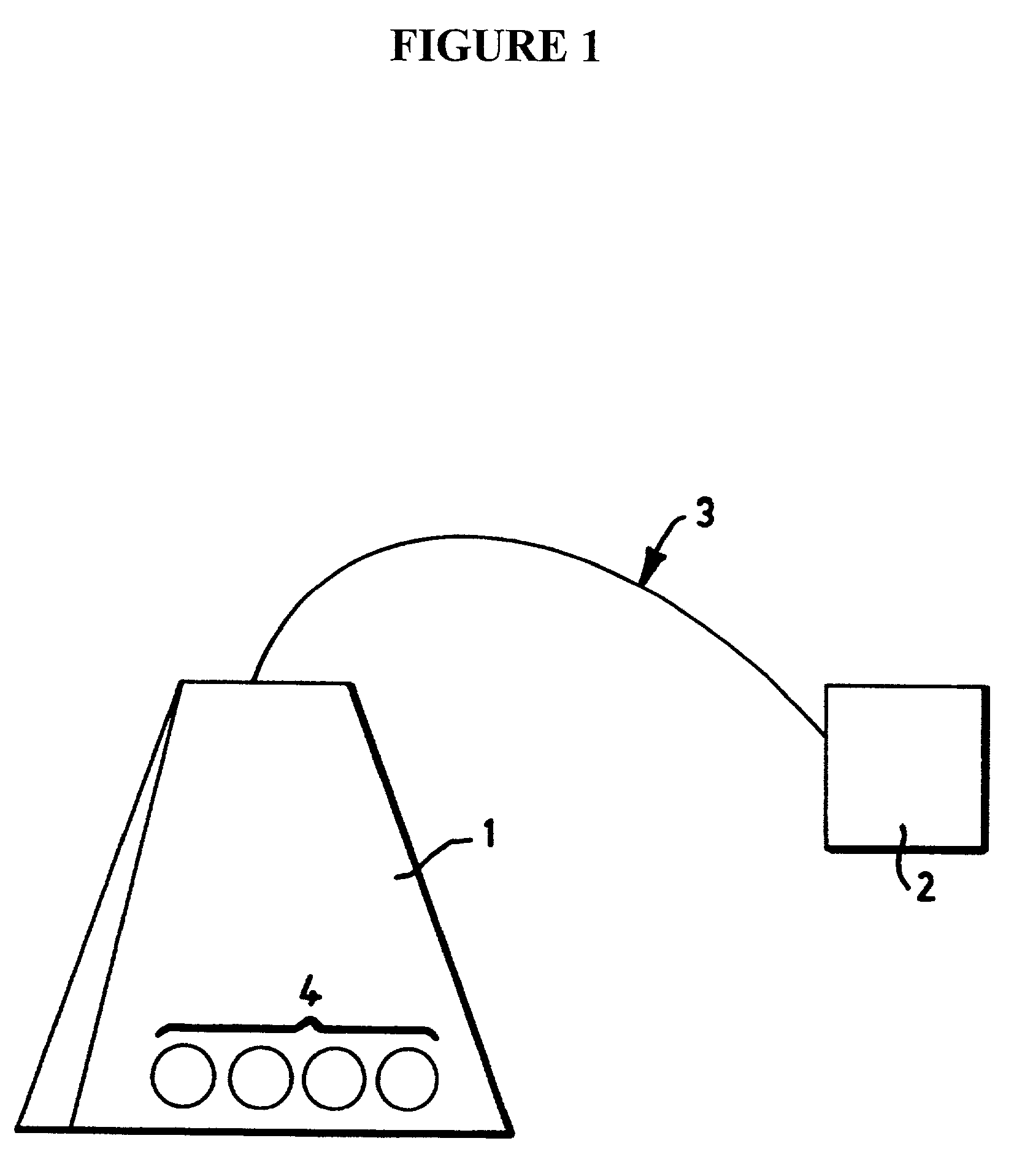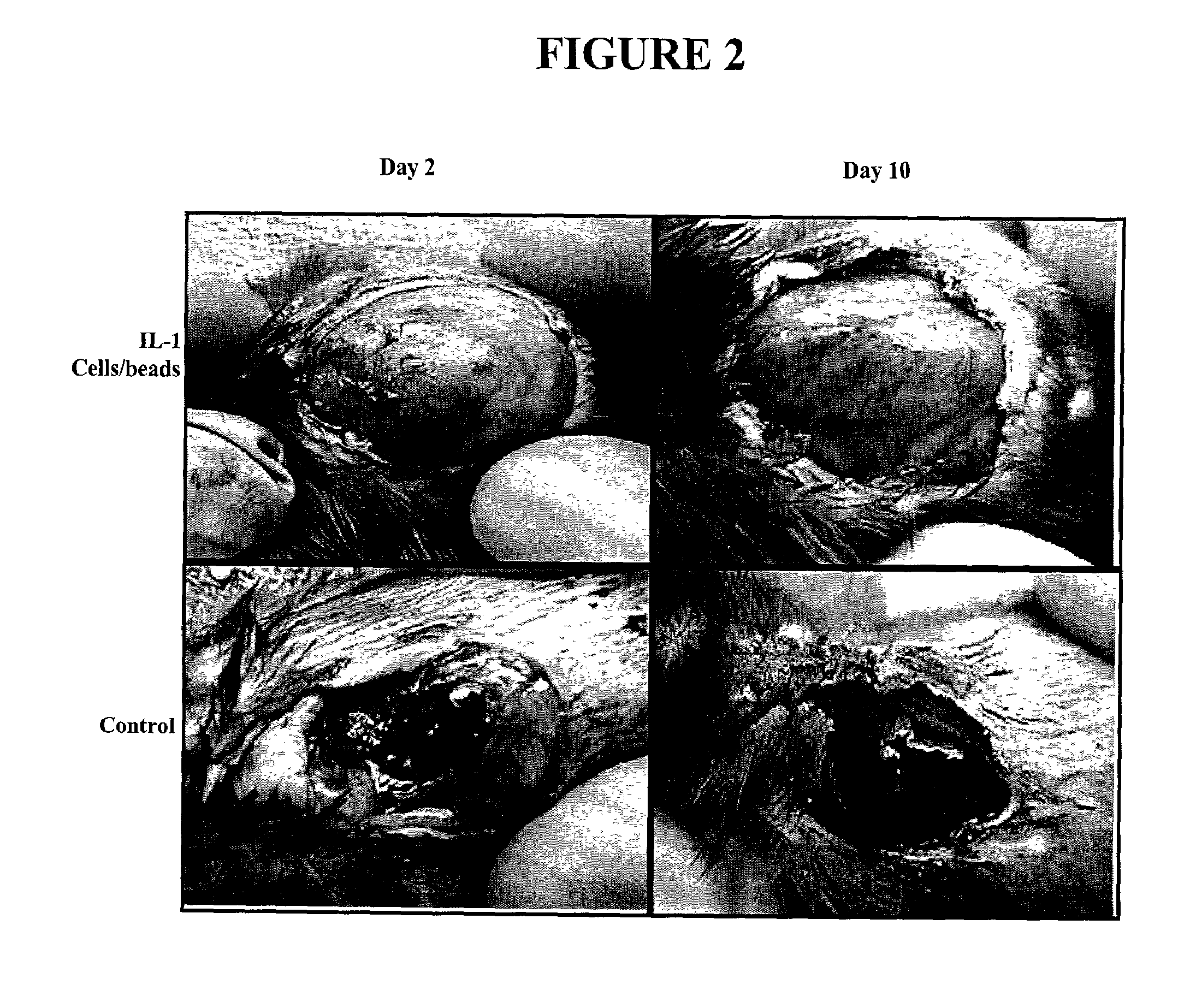Enclosures housing cell-coated supports for treating tumors
a cell-coated support and enclosure technology, applied in the field of enclosures housing cell-coated supports, can solve the problem that systemic administration is very toxic to the human body
- Summary
- Abstract
- Description
- Claims
- Application Information
AI Technical Summary
Benefits of technology
Problems solved by technology
Method used
Image
Examples
example 1
[0124]The experiments of this example demonstrate that human culture keratinocytes grown on macroporous microcarriers and contained in a porous enclosure improve healing in surgically created wounds in mice.
A. Experimental Methodology
Preparation of Human Keratinocytes
Isolation and Growing of Human keratinocytes: Human keratinocytes (AATB certified; University of Michigan cultured keratinocyte program) were isolated at The University of Michigan Burn / Trauma Unit from split thickness skin.
[0125]Trypsinization of the split thickness skin was effected as follows. The skin was placed dermis-side down in 150 mm Petri dishes. The pieces were cut into smaller pieces (about 2 cm×about 0.3 cm) and were soaked in a sterile solution of 30 mM HEPES, 10 mM glucose, 3 mM KCl, 130 mM NaCl, 1 mM Na2HPO4 buffer, pH 7.4 containing 50 units of Penicillin and 50 μg Streptomycin (Sigma, P-0906). After soaking for 1–2 hr at 4° C. the buffer was aspirated off, and 0.09% trypsin (Sigma, Type IX) in a Penici...
example 2
[0152]The experiments of this example demonstrate that human culture keratinocytes grown on macroporous microcarriers and contained in a porous enclosure that is then covered with a wound dressing material improve healing in surgically created wounds in mice.
A. Experimental Methodology
[0153]The experiments of this example were performed as described in Example 1, with the following exceptions. The group of mice that received the keratinocyte-coated CYTOLINE 1™ macroporous microcarrier beads (Pharmacia Biotech) (i.e., the beads / bags group) comprised five animals, while the group that received only the bags (i.e., the bags only group) comprised four animals. (They are labelled 2 to 5 because Mouse 1 expired during anesthesia.) In this example the bags from both the beads / bags group and the bags only group were covered with a polyurethane film dressing (TEGADERM, 3M Health Care, St. Paul, Minn.) with a cellophane product.
[0154]More specifically, the wounds were dressed either with huma...
example 3
[0164]The experiments of this example demonstrate that a tetr-expressing cell line transfected with hEFG and grown on macroporous microcarriers and contained in a porous enclosure, improves healing in surgically created wounds in mice.
A. Experimental Methodology
Cells
[0165]Osteosarcoma line U20S were grown and maintained in Dulbecco's modified Eagle's medium (DMEM) supplemented with 10% fetal bovine serum. The tetR—expressing cell line, U2CEP4R-11, was cotransfected with pcDNA3, pcmvtetOEGF and EcoRI-linearized pcmvtetOEGF to establish cell lines that expressed tetR and HEGF. Medium containing hygromycin B and G418 was used to select cells resistant to hygromycin B. The HEGF-expressing cell lines were determined by analysis of hEGF expression in the presence or absence of tetracycline. [See, Yao et al., Hum Gene Ther. Feb. 10, 1999;10(3):419–27; and Yao et al., Hum Gene Ther. Sep. 1, 1998;9(13):1939–50].
Cytoline 1™ Bead Wash
[0166]Five grams of CYTOLINE 1 macroporous microcarrier bead...
PUM
| Property | Measurement | Unit |
|---|---|---|
| size | aaaaa | aaaaa |
| size | aaaaa | aaaaa |
| size | aaaaa | aaaaa |
Abstract
Description
Claims
Application Information
 Login to View More
Login to View More - R&D
- Intellectual Property
- Life Sciences
- Materials
- Tech Scout
- Unparalleled Data Quality
- Higher Quality Content
- 60% Fewer Hallucinations
Browse by: Latest US Patents, China's latest patents, Technical Efficacy Thesaurus, Application Domain, Technology Topic, Popular Technical Reports.
© 2025 PatSnap. All rights reserved.Legal|Privacy policy|Modern Slavery Act Transparency Statement|Sitemap|About US| Contact US: help@patsnap.com


